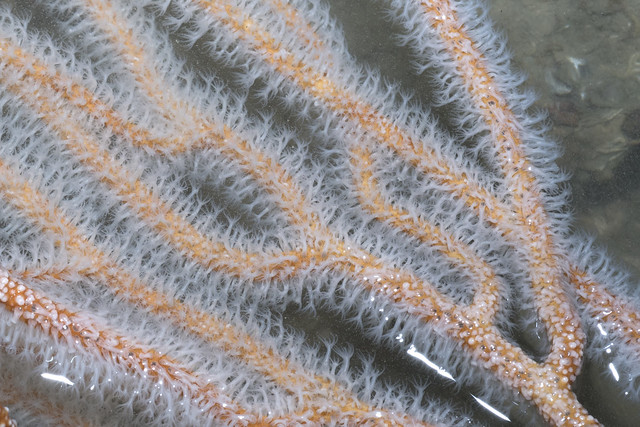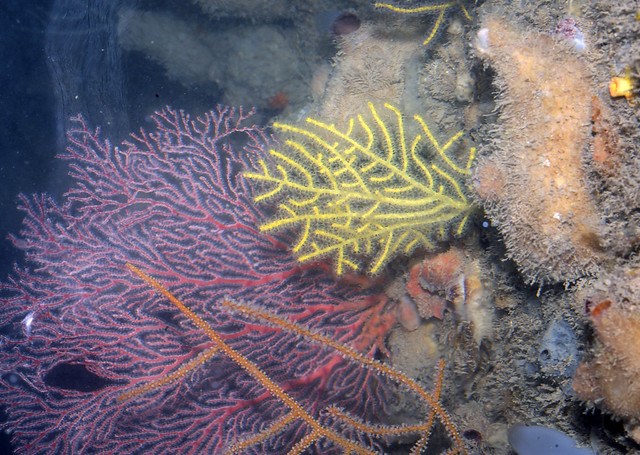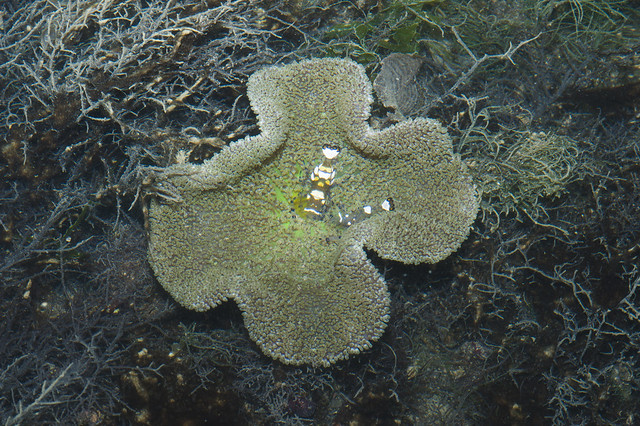Being nature people, we are a little picky about making these animals somewhat anatomically correct. Here's more tips on how to make cnidarians!
The most familiar Cnidarian are probably hard corals! Each hard coral is a colony of tiny animals called polyps. Each polyp produces a hard skeleton. What you see as a hard coral is the joined up skeletons of countless tiny polyps. When the polyps extend their tentacles, the colony can appear furry.
The colony can be spherical, plate-like, branching and many other shapes.
A spectacular marine event is mass coral spawning. When many corals release eggs and sperm at the same time.
A closer look at the spawning corals!
I made tiny polyps out of these lumpy wool and tiny styrofoam balls for eyes. The lumpy wool also makes great bristle worms.
Another kind of cnidarian are sea fans! These beautiful delicate creatures are often mistaken for plants. A sea fan is also a colony of tiny polyps. When the polyps are extended, the colony has a fluffy appearance. Gorgonian colonies usually take on branching forms, but the branching is only along one plane (i.e., most are not bushy).
The tiny polyps filter out edible bits from the water. So a sea fan usually grows with the branches at right angles to the flow of the current. This maximises the amount of water filtered and apparently breaks up the water current into curls that wash back over the polyps, for a second chance to filter out more edible bits. Sea fans are most abundant and grow largest where there is a strong one-way current.
It's really easy to make sea fans out of pipe cleaners!
Flowery soft corals are also colonies of tiny polyps.
While zoanthids are not colonial, the polyps do grow very close to one another.
Here's my attempt at flowery soft corals and zoanthids.
I made the soft corals from gloves with lumpy wool for the polyps.
It's also easy to make jellyfishes!
These jellyfishes have crochetted tentacles.
Sea anemones are single polyps and are not colonial. Carpet anemones are flat and often have a pair of shrimps that are adapted to live safely from the anemone's stings.
Cerianthids are NOT true sea anemones. They have a ring of longer outer tentacles with an inner ring of shorter tentacles.
Here is a soxy cerianthid.
Some sea anemone reproduce by budding off tiny anemones from their body. Here are some sock anemones with tiny anemones on their bodies.
Sea anemones can be created out of a glove, in the process of creating a sea star and crab too!

Did you make a cnidarian plushie? I would love it if you could share a photo of it!
This article is written for Celebrating Singapore Shores as part of International Year of the Reef 2018.




















